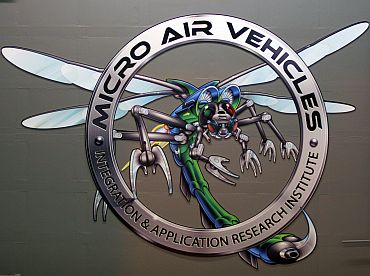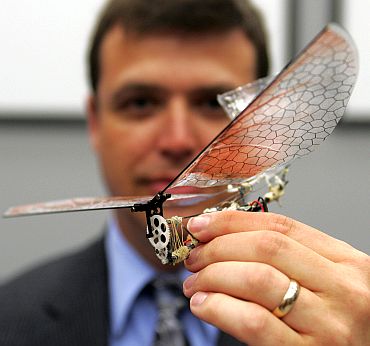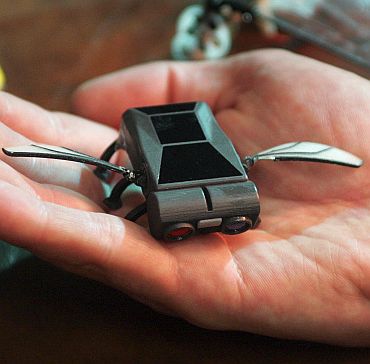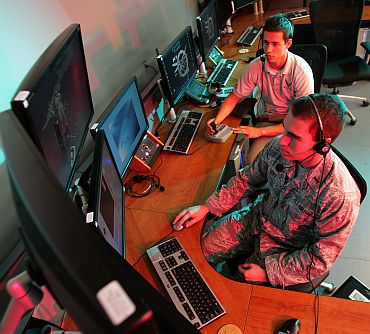
The US Air Force is developing the miniature spy craft with the goal of making them so small that they resemble birds and even insects.
They may look like toys but are far more capable and serve a wide array of purposes.
The US Defence Advanced Research Projects Agency started the Micro Air Vehicle (MAV) programme in fall 1996 to consider technologies that could be used to develop an airborne system for reconnaissance and surveillance with a maximum dimension of 6 inches.
Click on NEXT to see more PHOTOS...

The MAVs were specifically intended to fly autonomously to allow relatively untrained soldiers to use them to scout out what lay beyond the next hill or around a building.
From the beginning, however, it was hoped that the MAVs would progress to the ability to operate in more difficult environs, such as urban centers.
In 2005, DARPA announced the Nano Air Vehicle programme and its goal to develop agile and flyers system that could fit in one hand.

The NAV programme is developing an extremely small, ultra lightweight air vehicle system (less than 15 centimeters and less than 20 grams) with the potential to perform indoor and outdoor military missions.
The NAV explores novel, flapping wing and other configurations to provide warfighters with unprecedented capability during urban operations.
The programme is pushing the limits of aerodynamics, power conversion efficiency, endurance and maneuverability for very small air vehicle systems.
These platforms will be revolutionary in their ability to harness low Reynolds number physics, navigate in complex environments, and communicate over significant distances.

Flight-enabling nano air technologies include aerodynamic design tools to achieve high lift-to-drag airfoils; lightweight, efficient propulsion and power systems; guidance, navigations and communication subsystems; and advanced manufacturing and innovative subsystem packaging and configurations layouts.
DARPA's efforts to develop small aircraft have continued. Another spin-off from the MAV program is the AeroVironment Wasp.
It is a fixed-wing UAV with a 14-inch wingspan, and weighs about a half-pound.
It can fly at over 35 mph, and provides unobtrusive, real-time imagery from low altitudes. The Wasp's payload consists of two color video cameras, a GPS sensor, an altimeter, a compass, and a sophisticated autopilot enabling hands-free operation.

Wasp prototypes have been evaluated by the military in Iraq.
There are a number of variants, including an extended-range version, a variant equipped with infrared sensors, and a version with a collision-avoidance capability.
NAV programme objectives are to get even smaller: air vehicle systems less than 7.5 cm (about 3 inches) in size, ultra-lightweight (less than 10 grams or one-third of an ounce), and with the potential to perform indoor and calm weather outdoor military missions.

The programme is exploring novel, biologically inspired conventional and unconventional configurations to provide the warfighter with unprecedented capability for urban mission operations.
This effort will push the limits of aerodynamic and power-conversion efficiency, endurance, and maneuverability for very small air vehicle systems.
The programme is advancing technologies that enable collision avoidance and navigation systems for use in GPS-denied environments and developing efficient methods for hovering flight and deployment or emplacement of sensors